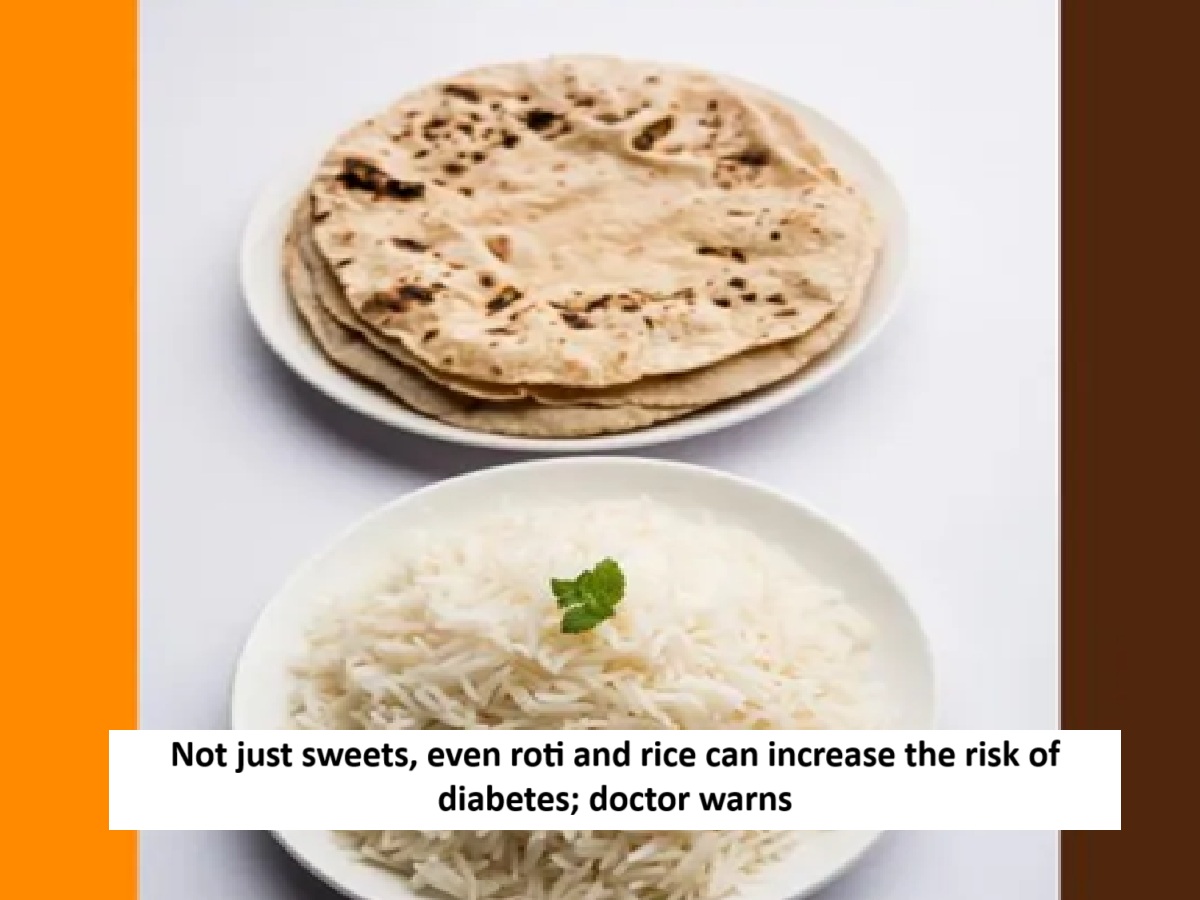
News Topical, Digital Desk : Rice and roti are staples of the typical Indian meal, both of which are high in carbohydrates. A lack of protein, fiber, and other nutrients in the diet is leading to rapidly increasing health risks related to metabolism.
Since Diwali preparations have begun, our eating habits tend to be a bit out of control. Therefore, we need to be mindful that including poor-quality foods or foods high in carbohydrates and saturated fat in our daily diet can cause health problems.
Rice or roti – which is better?
Indians are also known as a carb-loving nation because of the abundance of roti and rice in their diet. Most people consume 70-80 percent of their daily calorie intake as carbs. Roti is often considered better than rice, but this belief is not entirely correct. Dr. Reetika Samaddar, a nutritionist at Max Hospital, New Delhi, says that rice can be better than roti only if the quality of the flour is not good. If it is refined flour, it can cause harm just like white polished rice.
It's worth noting that a recent ICMR study focused on metabolic problems. According to this study, most Indians rely on white rice and processed whole grains, which increases the risk of insulin resistance. If lifestyle-related problems have emerged in recent years, a major reason for this is the unhealthy eating habits of Indians.
Why is excess carbohydrate harmful?
If you're consuming unhealthy carbs, your body needs more insulin to digest them. If you've been consuming low-quality carbs like white rice and refined flour for a long time, insulin release becomes irregular. This is why pre-diabetes is increasing rapidly, and people are developing diabetes at a young age. Obesity, hypertension, and heart disease are also on the rise due to poor eating habits.
The pattern will have to change
Generally, Indian food consists of a lot of roti and rice. At the same time, during festivals, along with carbs, sugar and fat also increase. On an average, 62 percent of the daily calories of Indians come from low quality carbohydrates like white rice, refined flour and added sugar , which is more than the prescribed amount. Balance of all nutrients in food is necessary. White rice is consumed more in South, East and North-East India. Whereas, wheat is used the most in North and Central India. Whole grains like healthy millet are a part of the daily diet of people in only a few states.
According to the Indian Council of Medical Research (ICMR)-
- Indians meet 62 percent of their daily energy needs from low-grade carbohydrates.
- The more carbohydrates you consume, the greater your risk of developing diabetes.
- Every 5 percent extra energy from carbs can increase the risk of type 2 diabetes by 14 percent.
Special caution regarding food
- Include dairy and plant-based foods in your diet.
- Carbs should not exceed 50 percent of the total calories in the diet.
- Healthy carbs include porridge, normal wheat chapati, brown rice and whole grain foods.
- Stay away from flour based foods like bun, bread, pasta, noodles, rumali roti.
- Protein should be 15 to 20 percent in the plate and the fat content should not be more than 30 percent.
- Protein is fine up to 20 to 30 percent of total calories, but more than 40 percent can be harmful.
- Avoid foods high in protein, such as red meat. Lentils are good for protein and also provide fiber. You can also eat eggs, chicken, and fish.
- Include healthy fats like almonds, walnuts, flax seeds, seeds, olive oil in your diet.
- Start increasing your physical activity today. Prioritize regular exercise and yoga.
- Stop consuming sugar.
- Improving diet and activity can reduce the incidence of type 2 diabetes by up to 50 percent.
Read More: Weight loss "magic" or health-threatening? Why are weight loss medications being questioned?
--Advertisement--

 Share
Share



